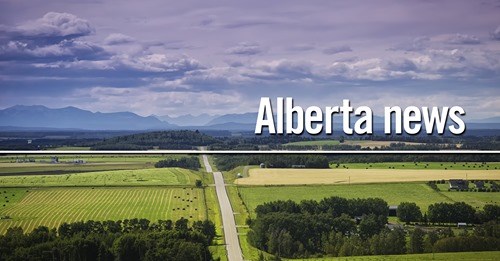Alberta and the St. Albert region are well positioned to lead the hydrogen production economy in the future, says Morinville-St. Albert MLA Dale Nally.
On April 22, Nally, who is also the associate minister of natural gas and electricity, spoke to the St. Albert and District Chamber of Commerce along with Mark Plamondon, executive director of Alberta's Industrial Heartland Association, and Dan Wicklum, president and CEO of the Transition Accelerator, a pan-Canadian charity that works with groups across the country to solve business and social challenges while building in viable transition pathways to a net-zero future.
“Studies suggest Alberta can be one of the most cost-effective suppliers of hydrogen in the world through the expansion of clean hydrogen production based on natural gas and CCUS (carbon capture, utilisation and storage),” Nally said.
The Hydrogen Council, a global advisory council of corporate executives, estimates that by 2050, the hydrogen sector could be worth $2.5 trillion per year and create 30 million jobs worldwide, Nally said – and the St. Albert region is poised to scoop up some of those jobs. The Northwest Sturgeon Refinery and the Nutrien Redwater Fertilizer Plan both produce clean hydrogen with captured carbon dioxide transported by pipeline for use in enhanced oil recovery.
Nally said these projects are important but are just ”the tip of the iceberg”, as global demand for hydrogen and the associated carbon capture and storage could increase tenfold in less than 30 years.
Plamondon said with a huge global demand for hydrogen, Alberta is well poised to lead the industry. There is a high amount of wet gas activity in Northern Alberta, a product used in making hydrogen, and the province can produce it at a discount when compared to the closest global competitor, the American Gulf Coast.
“This gives us a structural competitive advantage, which ultimately leads to low-cost natural gas, low-cost methane, which becomes a feedstock for hydrogen production,” Plamondon said.
“We're at about a 45-per-cent discount to the Gulf Coast and (to) North America as a whole, as some of the lowest cost natural gas in the world. We therefore as a result have the lowest natural gas price for consumers in the world … which allows us to be a leader with respect to cost in the production of hydrogen.”
The infrastructure around carbon capture, utilization and storage found in the Industrial Heartland, like the Sturgeon Refinery, is a key component for hydrogen production, Plamondon said, and having that infrastructure already in place allows for the province to hit the ground running with hydrogen and lower capital cost investments to get started.
On top of wet gas production and existing infrastructure in the province helping to push the province ahead on hydrogen, the region also has a geological advantage when it comes to the salt layer beneath the earth.
The area has around a 1.8-kilometre salt layer beneath the ground conducive for salt cavern storage, which allows for a very low-cost and low-capital way to have storage for the region's energy products.
“What that allows, it's a very capital-efficient way to have storage below the ground for various products including hydrogen. So as a hydrogen production facility here in the Industrial Heartland produces hydrogen, the ability to store that product here below the surface in a impermeable salt cavern is a very easy kind of advantage for our for our region,” Plamondon said.
While it may be difficult to get Alberta’s hydrogen products to Europe, Plamondon said hydrogen can leave Prince Rupert, B.C., and be in Asia in half the time that products from the competitors in the Gulf Coast can get there, and can be in Saudi Arabia in around 70 per cent of the sailing time.
“Our proximity to Asian markets is really strong relative to other energy producers in the world,” Plamondon said, adding many Asian countries, like Japan and South Korea, have very bold and ambitious objectives to import hydrogen to help meet their net-zero objectives.
Read more from StAlbertToday.ca



